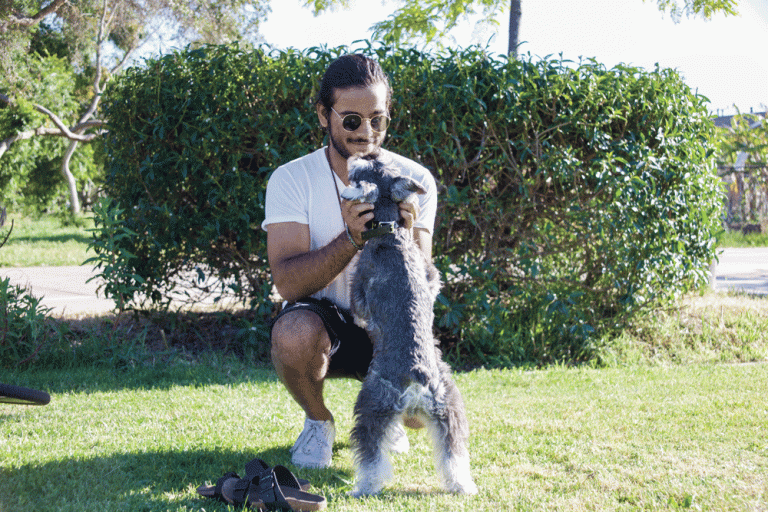
Lauren Shores
Staff Writer
Walking through Isla Vista, one can see that the word “dog!” is often followed by a group of people racing to see who can shower the animal with affection first. At the University of California, Santa Barbara, the chemistry lawn created a reputation for itself as a place where pet lovers could stop and watch as dogs run freely through the grass.
Known as dog-spotting, this activity of looking for dogs has garnered itself a Facebook group with over 500,000 members and a free app with over a thousand downloads. Participants post photos of strangers’ dogs to be admired by other users and to score “points,” depending on how far away the photo was taken, the action of the dog, etc.
Amanda Wang, a first year communications student and an avid dog lover, is a member of the dog-spotting Facebook page. “My friend from high school added me. She knows I’m obsessed with dogs.”
She explained that though she doesn’t post to the Facebook page, she watches its posts and remains a conscious dog-spotter offline, being on alert and announcing when she passes dogs on her walks to class or to get food.
Despite being unaware of the blossoming online dog-spotting trend, Isla Vista dog owners still noticed the attention their dogs were receiving on walks with their pets. Sarah Boliek, an Isla Vista resident, said she was constantly asked if others could pet her husky, Skai. “I get stopped whenever I walk her, at least three times a walk.”
In addition, Lindsey Liles, a fourth year Ph.D student studying Counseling, Clinical, and School Psychology, stated that her Catahoula Leopard Dog, Cody, “is definitely popular on campus … I left him outside the library once to return a book and came back a couple minutes later to find him being loved on by a group of kids. Stuff like that is pretty common.”
Cody became popular after she started bringing him to the classes she was a TA for. She explained how the first time she brought Cody to class was unplanned, as she was running late and didn’t have time to drop him off at her lab. Fortunately, the professor loved dogs, and Cody was allowed to continue coming to lectures and sections.
“The best part about being able to work with my pet is having my best friend with me all day. I think it helps me bond with my students as well,” stated Liles.
Though students showed great enthusiasm for the dogs’ presence in Isla Vista, Boliek stated, “You’re not supposed to bring dogs into buildings, so it’s definitely not the most dog-friendly place I’ve been, but the people are always happy to see her.” In addition, she commented on the lack of fenced-in dog parks, making it difficult to let her pet exercise off the leash.
Boliek and Liles both expressed the difficulty of trying to own a dog in Isla Vista.
“Being a pet owner in this area can make finding housing a little tough,” Liles said. “Cody is very well behaved but I’m sure that’s what everyone trying to rent tells the landlord … I know a lot of people have a hard time finding a place that allows dogs, especially in I.V. or downtown Santa Barbara. Goleta might be a little easier.”
Boliek stated that she was able to overcome the landlord challenge by registering her pet as an emotional support animal; she wants to fully certify Skai as a therapy dog. “If we’re bending the rules to get her to live with us, as much people as possible should benefit from it.”
Regardless, pet owners prove constantly how far they will go to keep their best friends, as evident by the numerous dogs seen walking through the university and Isla Vista.
“It’s one of the things I told my high school friends when I was giving them tours. You’ll see at least one dog today. It was a selling factor. Seeing them just makes your day happier,” said Wang.










